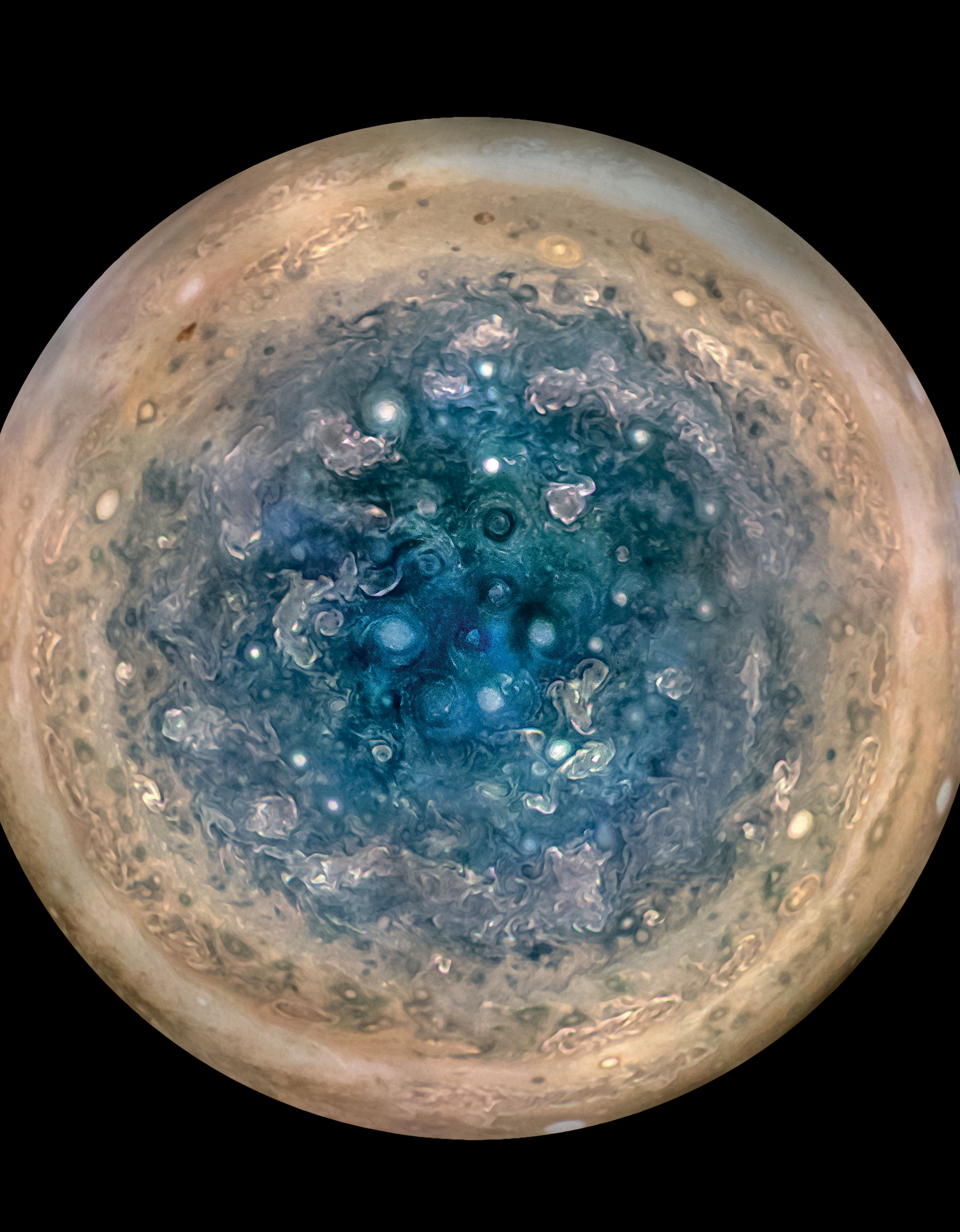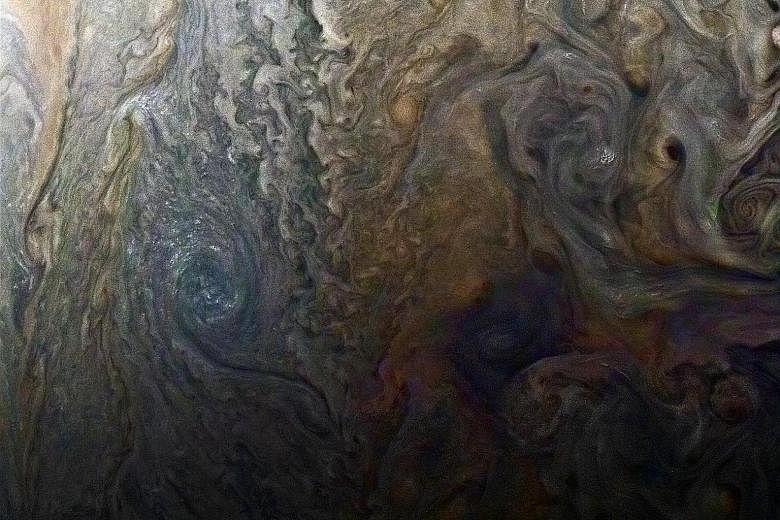MIAMI • An unmanned Nasa spaceship circling Jupiter has spotted massive cyclones at the gas giant's poles, revealing stunning new details about the solar system's largest planet.
A Nasa statement described the planet as "a complex, gigantic, turbulent world" that is far different from what scientists previously thought. Two papers in the journal Science and 44 papers in Geophysical Research Letters describe a trove of discoveries made since the spaceship Juno began orbiting Jupiter last year.
"We knew, going in, that Jupiter would throw us some curves," said Juno principal investigator Scott Bolton from the Southwest Research Institute in San Antonio. "There is so much going on here that we didn't expect that we have had to take a step back and begin to rethink of this as a whole new Jupiter."
Jupiter's poles are covered with dozens of densely clustered storms, possibly dropping hail or snow.
"Images of Jupiter's previously unseen poles show a chaotic scene of bright oval features," said one of the studies in the journal Science. These ovals, it turns out, are huge swirling storms, some of which measure up to 1,400km across.
Researchers found "signs of ammonia welling up from the deep atmosphere and forming giant weather systems". Now, more study is needed to better understand the nature of Jupiter's storms.

The solar-powered Juno spacecraft launched in 2011, and made its first tour around Jupiter on Aug 27 last year. Juno moves in an elliptical orbit, skimming within 5,000km of Jupiter's cloud tops and passing over the poles. Its mission is scheduled to end in February next year, when the probe will self-destruct by diving into the planet's atmosphere.
The US$1.1 billion (S$1.5 billion) project aims to peer beneath the clouds around Jupiter for the first time to learn more about the planet's atmosphere and how much water the planet contains.
"On our next fly-by on July 11, we will fly directly over one of the most iconic features in the entire solar system - one that every school kid knows - Jupiter's Great Red Spot," said Dr Bolton. "If anybody is going to get to the bottom of what is going on below those mammoth swirling crimson cloud tops, it's Juno and her cloud-piercing instruments."
Juno has also taken measurements of Jupiter's gravitational field, to see if it has a solid core, as some models have predicted, or no core at all. Instead, researchers found that the core is fuzzy - neither a small compact core nor a non-existent core. Dr Bolton said the core may be partially dissolved, and is much larger than anticipated.
AGENCE FRANCE-PRESSE

